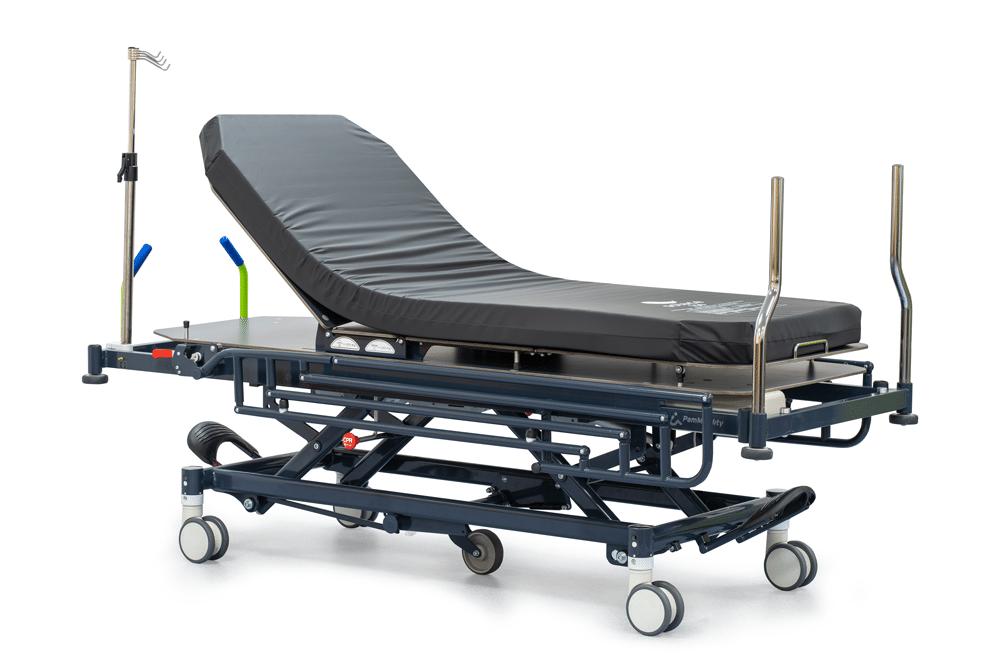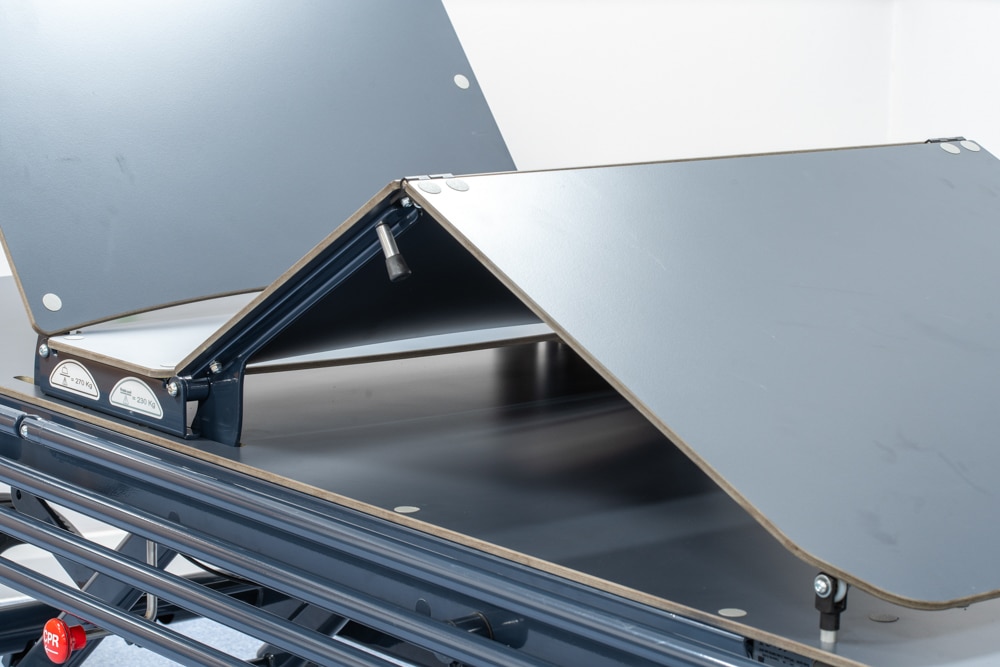How does the Felgains MultiFlow Low-Height Stretcher improve efficiency in emergency departments?
The MultiFlow Stretcher from Felgains combines an industry-leading minimum height of just 420mm with full X-ray capability, enabling easier patient transfers and mobilisation.
But what does this actually mean for your hospital, and how does this result in increased efficiency in emergency departments?

Enables easier mobilisation and earlier discharge
The ultra-low height of the MultiFlow makes it much easier for the patient to get in and out of the stretcher themselves, making it easier for them to self-mobilise as soon as they are able to.
Traditionally, patients in the ICU are kept sedated and bedridden to minimize stress and complications, but by implementing low-height stretchers like the MultiFlow in emergency departments and in ICU, patients will be able to mobilise quicker, resulting in faster discharge, better patient flow, and better outcomes for the patients themselves.
A study from the American Geriatrics Society in 2005 found that older adults who were able to self-mobilize were more likely to be discharged from the hospital sooner and have a better quality of life after discharge. The study also found that self-mobilization was associated with a decreased risk of falls and readmission to the hospital.1
Being able to safely mobilise a patient directly from a hospital stretcher is also quicker than having to transfer the patient onto another surface or having to use equipment such as a hoist.
This, combined with the benefits of easier mobilisation, results in more patients being seen, treated, and transferred or discharged in a shorter period of time, increasing efficiency and improving patient flow in your hospital.
Related article: What is early mobilisation? The benefits of early mobilisation in ICU and Hospitals
Reduces the risk of falls
Falls are the most frequently reported incident affecting hospital inpatients, with around 250,000 falls occurring in inpatient settings each year in England alone (NHS Improvement)1. The impact that falls have on patient flow is also significant, due to each fall taking up precious time and staff resources.
Low beds and stretchers like the MultiFlow are widely accepted as tools to effectively prevent falls and reduce the risk of fall-related injury. The ultra-low mattress platform height of the MultiFlow allows patients to get on and off the stretcher more easily, reducing the need for patients to climb or descend from a higher surface and decreasing the risk of falling during transfers.
Due to the shorter fall height, and subsequent lower impact force, the risk of the patient actually injuring themselves as a result of falling is also significantly reduced.
Allows X-rays to be carried out in ED
As standard, the MultiFlow stretcher has a full-length X-ray tunnel and an X-ray translucent mattress platform.
This means that instead of transferring every patient to a specific X-ray room or unit, patients can be X-rayed by placing the cassette in the appropriate position in the X-ray tunnel.

Citations
[1] The Impact of Self-Mobilization on Outcomes in Older Adults” (Journal of the American Geriatrics Society, 2015).
Related articles
What is early mobilisation? The benefits of early mobilisation in ICU and Hospitals
Felgains PatientFlow Stretcher vs Stryker Transport Stretcher; an honest comparison
How does the Felgains ImageFlow stretcher improve efficiency in imaging departments?
Get in touch
Got a question or want to send us a message? Let’s talk.